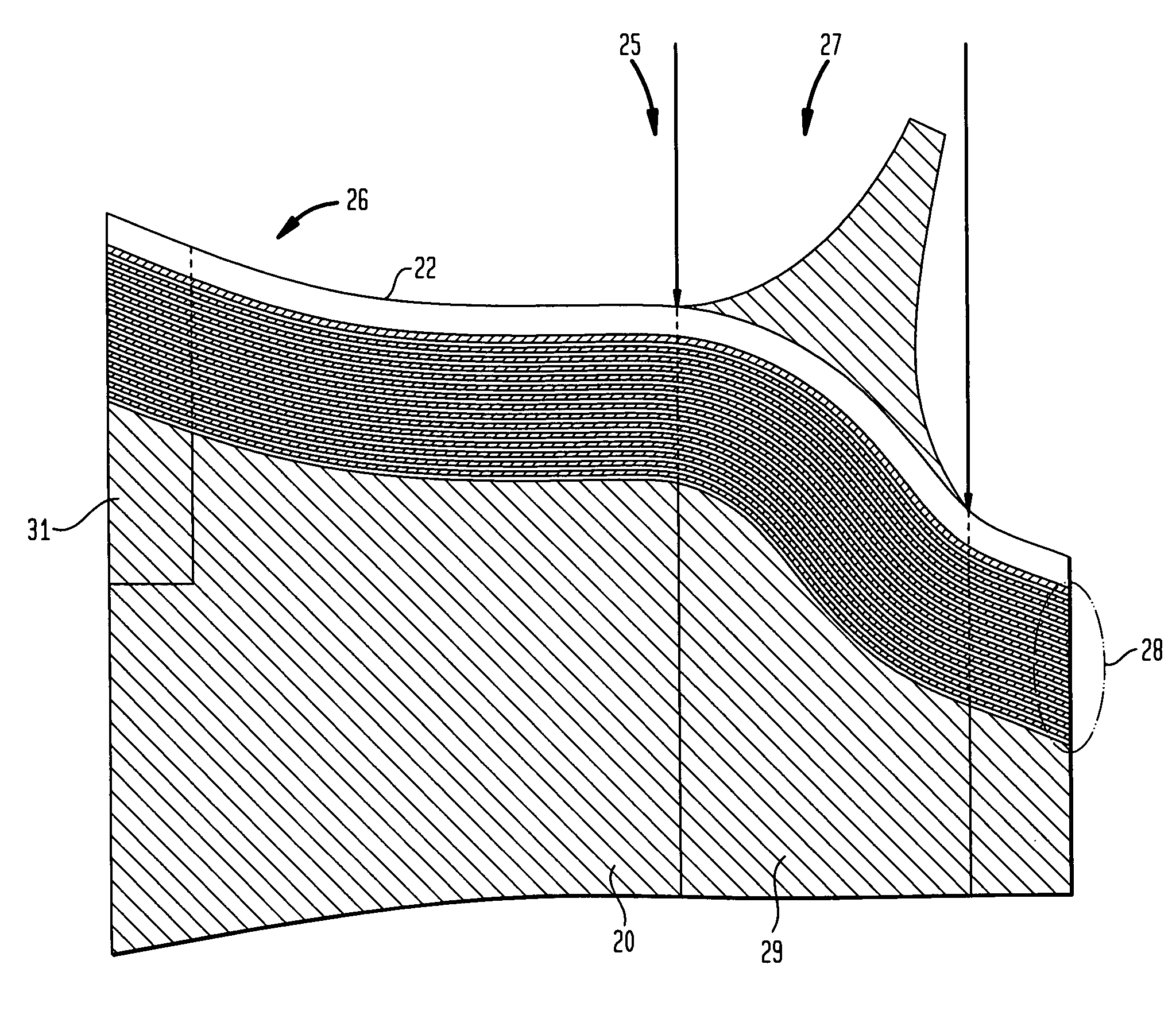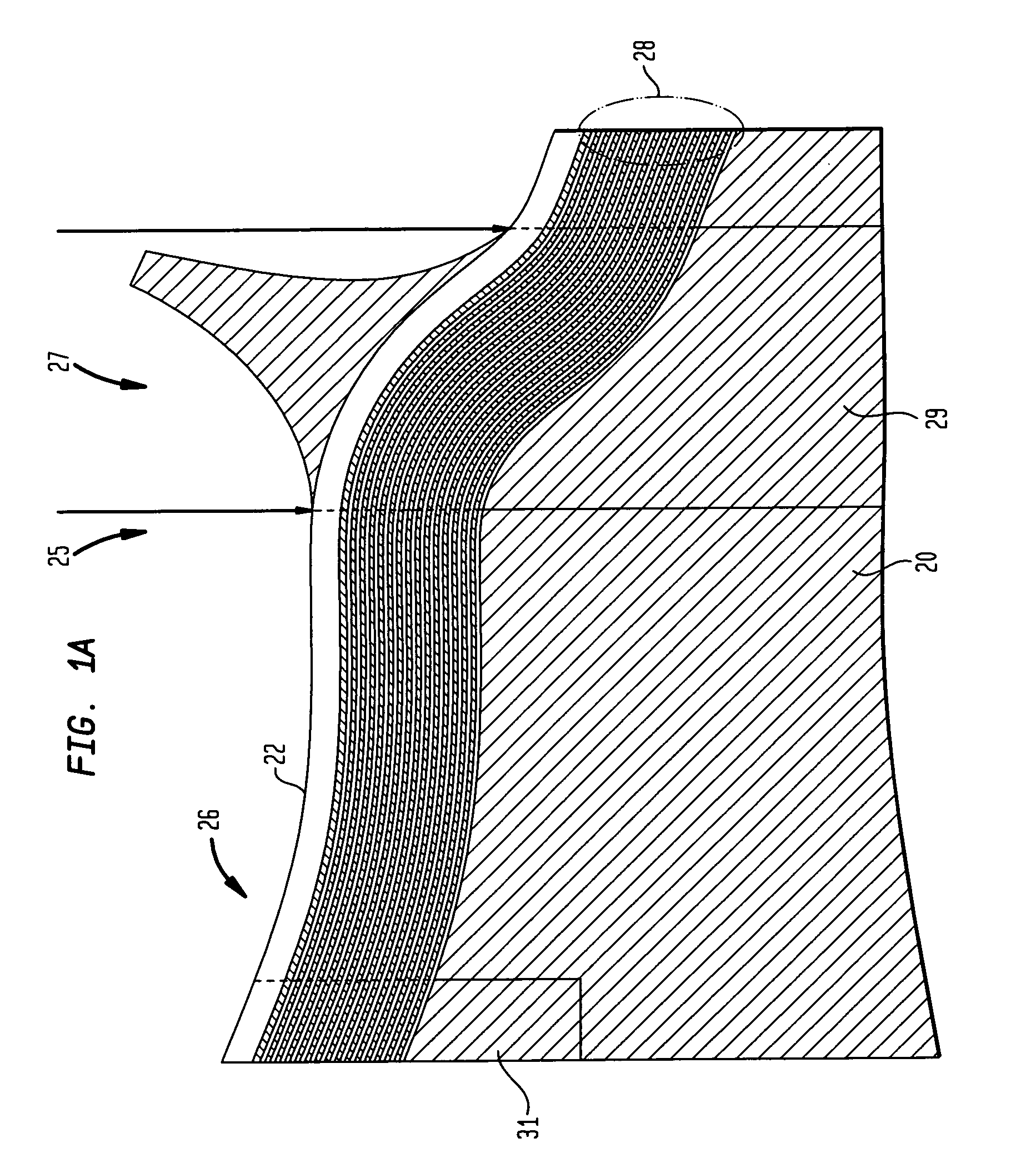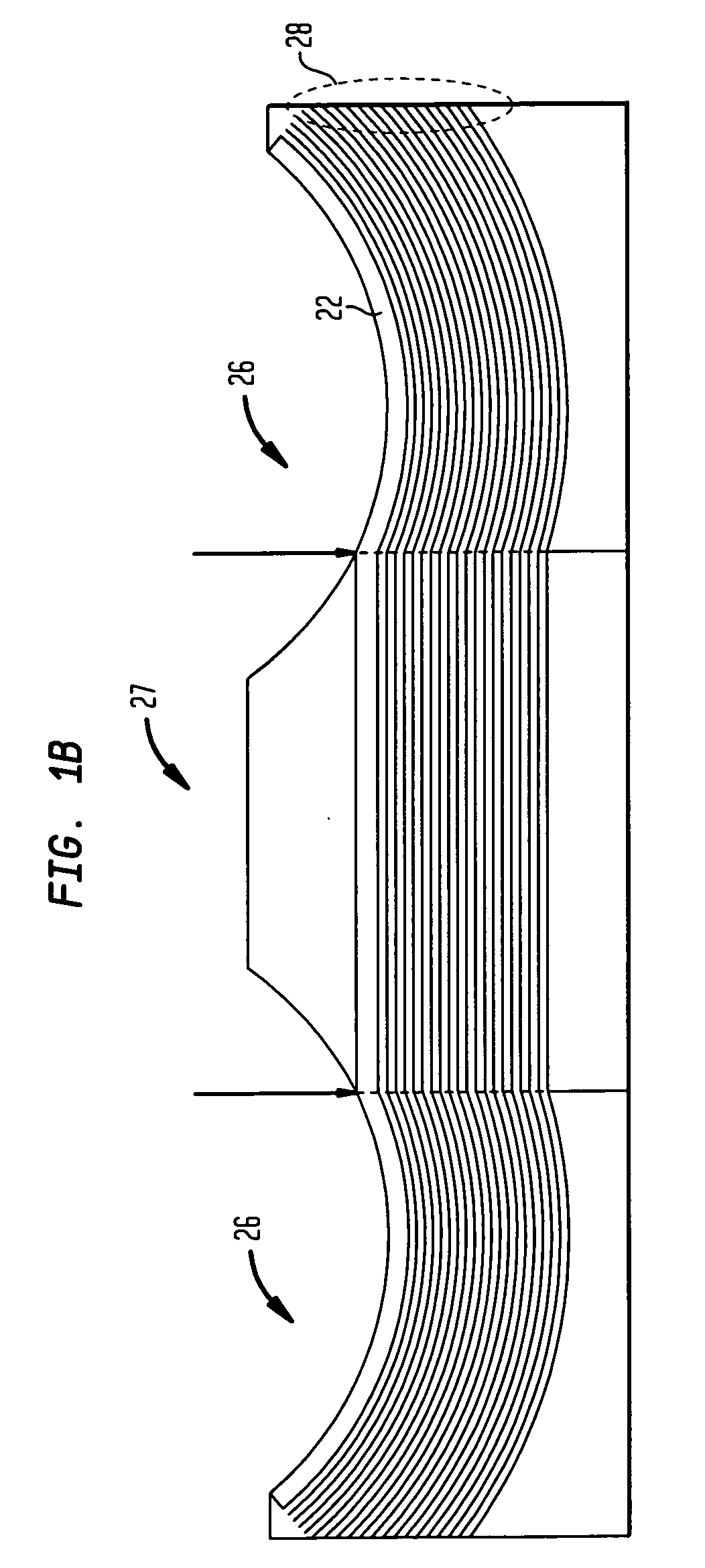[0006]These contoured perimeters are often in portions of the garment where a scoop or other such contour is required or desired for garment fit. Specifically, panels with such contours are often found in the neckline portions of garments. One very specific example of a panel with a contoured perimeter is the portion of a bra known as a bra wing. The bra wing panel, illustrated in FIG. 1, has a contour perimeter to fit under and otherwise conform to the underarm of the wearer. As described herein, it is regarded as advantageous for these portions of the garment to have an
edge region or interior region with a curable polymer formed thereon for the garment to have a “non-slipping” relationship with the wearer. In addition, fabric panels with the cured polymer disposed thereon have a smoother fit. In one embodiment, the cured polymer is
silicone.
[0008]One skilled in the art will appreciate that the present invention will have application in almost any portion of any garment. Examples of such garments include: foundation garments (e.g. bras, underwear, etc.); active wear (e.g. leotard, tights,
cycling wear); and swimwear (e.g. swimsuits). As to portions of the garment where the present invention might be used, it is any portion where a non-linear application of cured polymer would be useful for comfort and fit. As previously stated, a fabric panel configured as a bra wing can have silicone in a non-linear trajectory that conforms to the underarm contoured perimeter of the bra wing. The bra wing fabric panel is subsequently incorporated into the bra. The fabric panel with the silicone so deposited finds an almost infinite variety of uses beyond bras and undergarments. One skilled in the art will appreciate that the panels can be incorporated into any garment where grip and smoothness are sought. Potential uses go beyond undergarments and active wear, and can include post-surgical compression garments that require some gripping to stay in place.
[0013]As noted above, in certain preferred embodiments the curable polymer includes silicone. As is well known to those skilled in the art, a silicone is defined as any one of a large group of siloxanes that are stable over a wide range of temperatures. More specifically, silicones are any of a group of semi-inorganic polymers based on the
structural unit R2SiO, where R is an
organic group, characterized by wide-
ranging thermal stability, high
lubricity, extreme water repellence and physiological inertness. Silicones are typically used in lubricants, adhesives, coatings, paints,
synthetic rubber, electrical insulation and prosthetic replacements for body parts. In one particularly preferred embodiment, the silicone is a compound made up of, by weight, approximately 10-30% silica and 60-90% vinylpolydimethylsiloxane.
[0018]In one preferred embodiment, the conveyor element cooperates with the coordinate surface to convey the cut pattern pieces to and from the coordinate surface. The conveyor element may include a
conveyor belt having a top surface for supporting the cut pattern pieces as the pieces move between various stations, i.e.
cutting station, distribution
station, disposing polymer
station, curing station, etc. In one particular preferred embodiment, the top surface of the
conveyor belt may include a material having a low
coefficient of friction or a non-stick material such as the material sold under the
trademark TEFLON. As a result, there may be no need to provide an
absorbent material between the pattern pieces and the conveyor because any polymer deposited on the conveyor may be easily removed from the top surface such as by using a scraper.
[0020]In other preferred embodiments, the polymer may be provided on the interior region of the pattern piece (i.e. not the
edge region of the fabric). In these embodiments, the cured polymer may provide gripping to prevent the fabric from riding or slipping over the body of a garment wearer. The cured polymer may be one or more beads that follow an S-shaped or curved pattern. The one or more polymer beads may be continuous or non-continuous. The curable polymer may also be deposited as polymeric dots on the fabric. The intermittent polymer deposits may form a matrix of polymer on a fabric. In certain preferred embodiments, the spacing between the polymer beads may be increased for increasing the stretchability of the fabric. In other preferred embodiments, the spacing between the polymer beads may be decreased for increasing the gripping of the fabric. The polymer beads may also be applied over a
central region of a fabric to provide gripping at the
central region for holding the fabric in place when worn. This provides a garment having stability due to the gripping from the polymer. This stability minimizes the likelihood that the fabric will roll over upon itself, which may result in bunching or binding of the garment. The present invention also provides a finished edge that has more stretch because it does not have a thick finished edge that is formed when using narrow elastic, trim, lace and / or a folded-over edge.
[0022]It is advantageous if the curable polymer dispensing head (whether configured to deposit the curable polymer along a contoured perimeter or a straight perimeter in the edge region or in an interior region of the fabric) is brought into contact with the fabric at the conclusion of bead deposition. This avoids curable polymer icicles from forming on the dispensing head after the flow of curable polymer is stopped when bead deposition is complete. A build up of silicone on the dispensing head can cause curable polymer to be deposited in an undesired location, at best causing an unnecessary mess and at worst ruining one or more pieces of fabric. In order to avoid the formation of curable polymer residue on the head, the following sequence is practiced. First, the pressure in the dispensing head is turned off to stop curable polymer from flowing. Then after a brief moment, (e.g. about one second or less) the dispensing head is brought into contact with the underlying fabric.
 Login to View More
Login to View More 


